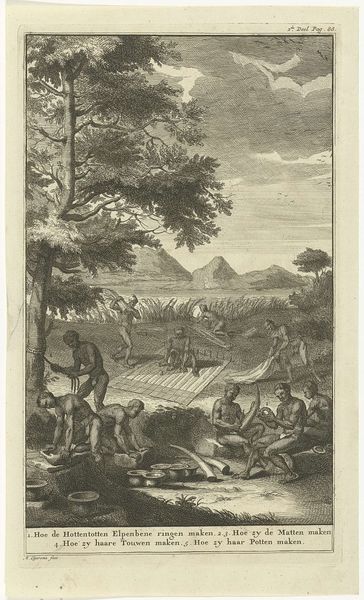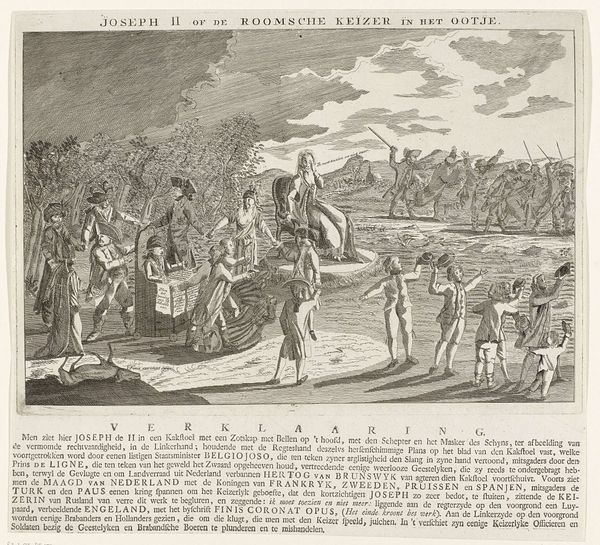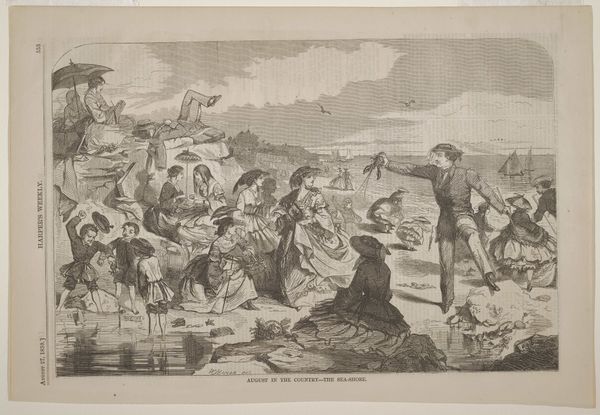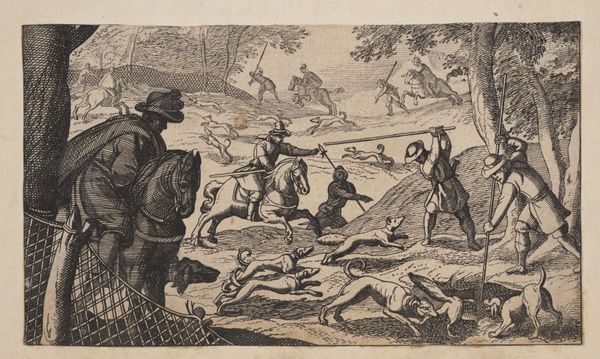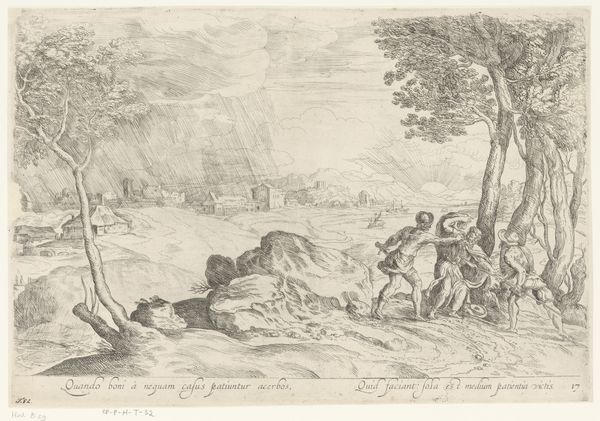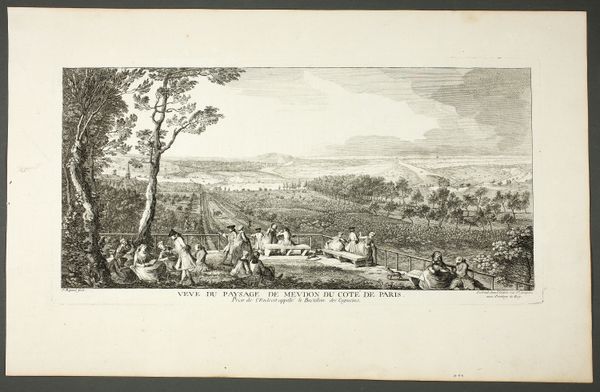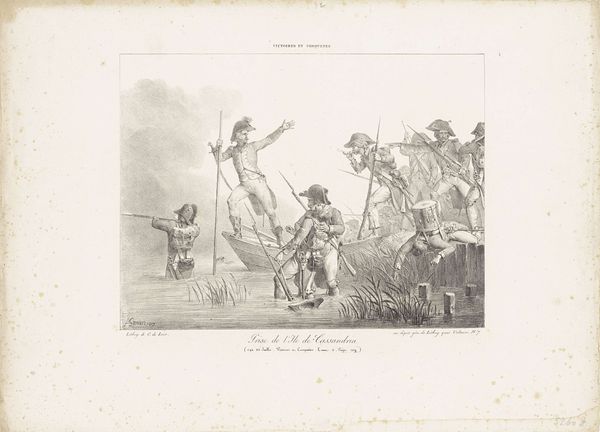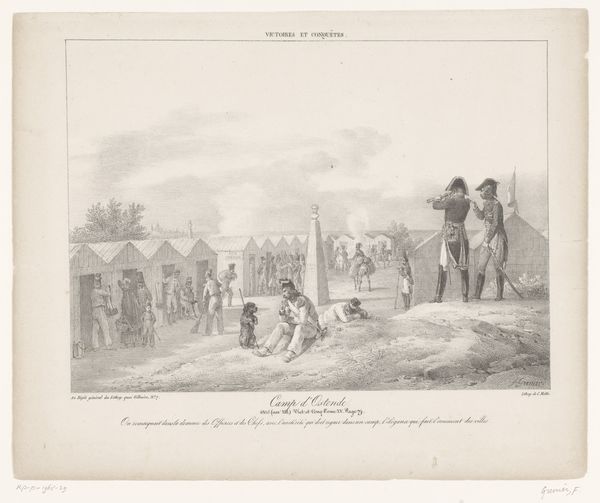
print, engraving
#
narrative-art
#
baroque
#
dutch-golden-age
# print
#
pen illustration
#
caricature
#
old engraving style
#
landscape
#
figuration
#
folk-art
#
line
#
genre-painting
#
history-painting
#
academic-art
#
engraving
Dimensions: height 164 mm, width 195 mm
Copyright: Rijks Museum: Open Domain
Editor: This is "Apen op het Ijs," or "Monkeys on the Ice," an engraving by Leonard Schenk from 1720. It's part of the Rijksmuseum collection. It's... unsettling, I think. All these monkeys dressed as people, cavorting on the ice. It makes me wonder what’s really going on. How do you interpret this work? Curator: Indeed, unsettling is one word for it. What we see here transcends a simple winter scene; it's thick with symbolic intent. Consider the prominent display of simian figures adopting human behaviors: What cultural anxieties do you think are being addressed through such imagery? Editor: Cultural anxieties... Were monkeys a common symbol back then? What did they represent to people in the 18th century? Curator: The monkey, throughout art history, often stands in for base instincts, foolishness, and the mimicry of human behavior without true understanding. Think of it as a commentary on social climbing or perhaps a critique of the aristocracy during that time. Look at the detail with which the artist renders the clothing – does this mimicry seem celebratory or satirical? Editor: Satirical, definitely satirical. They look ridiculous, like they’re trying too hard to be human. The monkey being pulled on a sled like royalty especially! Curator: Exactly! It begs the question: What societal behaviors were deemed worthy of such sharp ridicule? Were these visual tropes used to comment on trade relations, colonialism, and slavery? Each detail likely served as a visual shorthand for the contemporary viewer, echoing cultural sentiments. Editor: So it’s less about the monkeys themselves and more about what they represent about human behavior and social structures at the time. That adds a whole new layer of meaning. I will keep this in mind when approaching the work now! Curator: Precisely! Recognizing these symbolic languages unlocks deeper layers of historical understanding and encourages us to examine enduring elements of human nature and cultural critique throughout history.
Comments
No comments
Be the first to comment and join the conversation on the ultimate creative platform.
